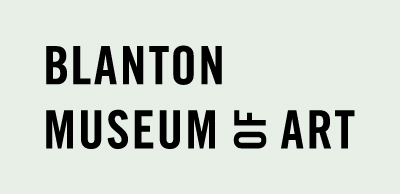Verde, que te quiero verde
Primary
Carmen Herrera
(Havana, Cuba 1915–New York, New York 2022)
Date2020/2023
MediumAcrylic paint, site specific mural, unique
DimensionsDimensions variable
Credit LineBlanton Museum of Art, The University of Texas at Austin, Commission through funds provided by the Kahng Foundation, 2023.13
Rights Statement
Collection AreaModern and Contemporary Art
Object number2023.13
On View
On viewLocations
- exhibition BMA, Grounds
Collection Highlight
“It is an honor that my first major public mural commission will be with the Blanton Museum of Art, an institution that I have admired and respected for decades. As a museum that has long been at the forefront of collecting work by artists of Latin American descent, as well as the place where Ellsworth Kelly realized his last great work of art, entering the collection at this moment marks a high point in my long career.”
—Carmen Herrera, 2020
Cuban-American artist Carmen Herrera first exhibited her paintings in Paris in the late-1940s and early-1950s. But in 1954, when she moved to New York, Abstract Expressionism was in style, and her geometric abstractions were ignored. Undaunted, she withdrew to her studio. Over the course of the next six decades, she waged a radical revolution in abstract art that was far ahead of its time, yet overlooked—until 2004, when she sold her first painting at the age of 89. This signaled a shift in Herrera’s career. She was soon lauded as one of the art world’s greatest undiscovered secrets.
For this mural, Herrera drew inspiration from her groundbreaking 1956 painting Green and White. Born from a process of purifying her art, this early work marked a period of intense experimentation as she developed her hard-edged, signature style. Herrera translated this painting’s delicate geometries into the mural; in her words: “The dynamics of color and space, the straight lines, the sharp edges, and the delicate meeting points. It is all there.” Sharp white angles emerge from the four corners of each quadrant, their tips almost touching in the middle as they form a central square framed by triangles. The eye reads this geometric configuration as a play between positive and negative space, a push-pull between white angles and green forms. Repeated rhythmically throughout the Blanton’s loggia, the composition’s white angles whirl along the wall like pinwheels evoking verdant growth.
The mural’s color gave rise to its title, Green, How I Want You Green, the refrain of a mournful 1928 poem by Spaniard Federico García Lorca called “Romance Sonámbulo,” or “The Sleepwalker’s Ballad,” in which the poet longs for the unattainable. With this landmark mural, the Blanton celebrates the long and lasting legacy of a painter who revolutionized the practice of geometric abstraction in Havana, Paris, New York, and beyond—albeit quietly—for decades.





![No te arruges cuero viejo, que te quiero pa tambor!, from Dichos populares [Do Not Wrinkle, Old Skin, Because I Want to Use You as a Drum!, from Popular Sayings]](/internal/media/dispatcher/6037/thumbnail)


![Sozinho em verde [Alone in Green]](/internal/media/dispatcher/14581/thumbnail)
![Ventanita verde [Little Green Window]](/internal/media/dispatcher/1624/thumbnail)

